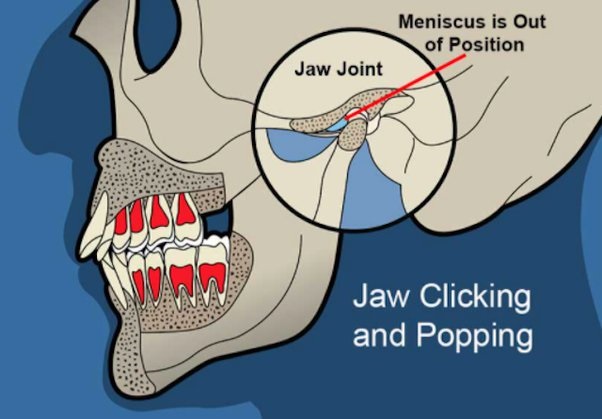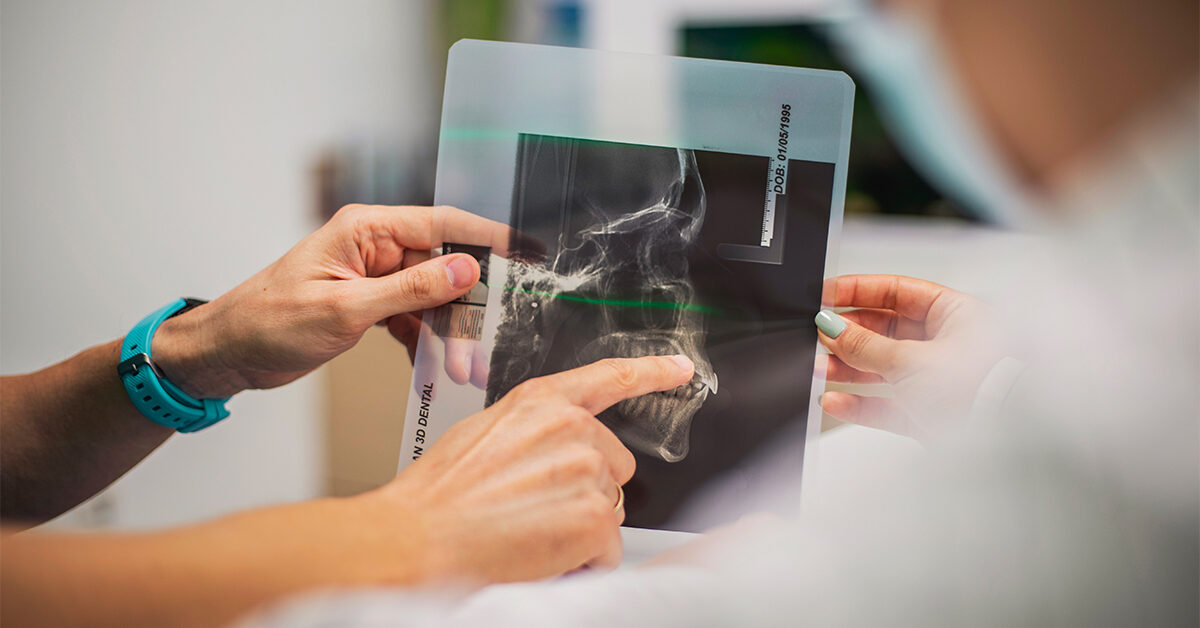Around 30% of the population have a pure jaw joint click – without pain or restricted movement.
The cracking or clicking noise can be classified according to when it occurred: whether it occurs in the first third, second third, or last third of mouth opening.
What can be Behind a Cracking Sound in the First Third of the Mouth Opening?
A typical sign of a joint disc that is too flexible – also known as a hypermobile disc – is the cracking within the first 13 – 15 mm of the mouth opening.
Normally, the joint disk lies above the joint head – that means exactly between the jaw head and the joint socket. However, the articular disc is often not centrally located above the head but rather a little further forward; that means in front of the jaw head when the jaw is closed. If you now open your mouth, the joint disc jumps into the right position, roughly centrally above the head of the jaw. When you close your mouth again, there is often a quieter cracking sound because the joint disc has jumped back into the wrong position; that means, in front of the jaw head. We call this an anterior disc dislocation with reduction.
The cracking noise in the middle third of the mouth opening is less common; this is usually due to adhesions around the joint disc.
Most people whose jaw makes a cracking sound in the last third of their mouth opening have a significantly wider mouth opening; we also call this a hypermobile temporomandibular joint; in other words, a jaw joint that is too mobile. Normally, the head of the jaw joint can only reach the so-called tuberculum, a bony boundary, when the mouth is opened to its maximum extent. However, some people can move the jaw head beyond this limit, in which case the mouth opens 60mm or wider.
Read more: Latest Facts About TMJ Surgery And Treatments In UAE
What About Therapy?
Treating a pure clicking noise is extremely difficult; physiotherapy can sometimes bring relief, but the jaw joint cracking remains for the most part. A basic rule is that the longer the cracking has existed, the more difficult the therapy. However, not every temporomandibular joint cracking needs to be treated. The main symptoms for treatment are pain and limitation of the temporomandibular joint movement.
What is the Difference Between Rubbing?
Some patients do not have a clicking or cracking but a kind of rubbing sound in the temporomandibular joint. During this temporomandibular joint rubbing, the bone of the mandibular head usually rubs on the bone of the acetabulum. Causes can be a degenerative diseases like arthrosis. However, it can also be a hole in the joint disc. In most cases of rubbing sound in the temporomandibular joint, there is no need for therapy (only in cases of pain and/or limited mouth opening).
If you like to have more information about temporomandibular joint disorders, listen to this free podcast: TMJ&Jaw Pain:
https://www.buzzsprout.com/2004000
or visit the website: www.tmj.clinic
PD Dr.Dr. Astrid Kruse Gujer MD DMD
Maxillofacial surgeon





